In under 30 minutes, you will enjoy this fluffy and tender gluten-free pita bread filled with your fillings of choice or dipping it into your favorite dip too. Using just 6 simple ingredients, no yeast, and minimal effort, you'll love these for all sorts of dips.
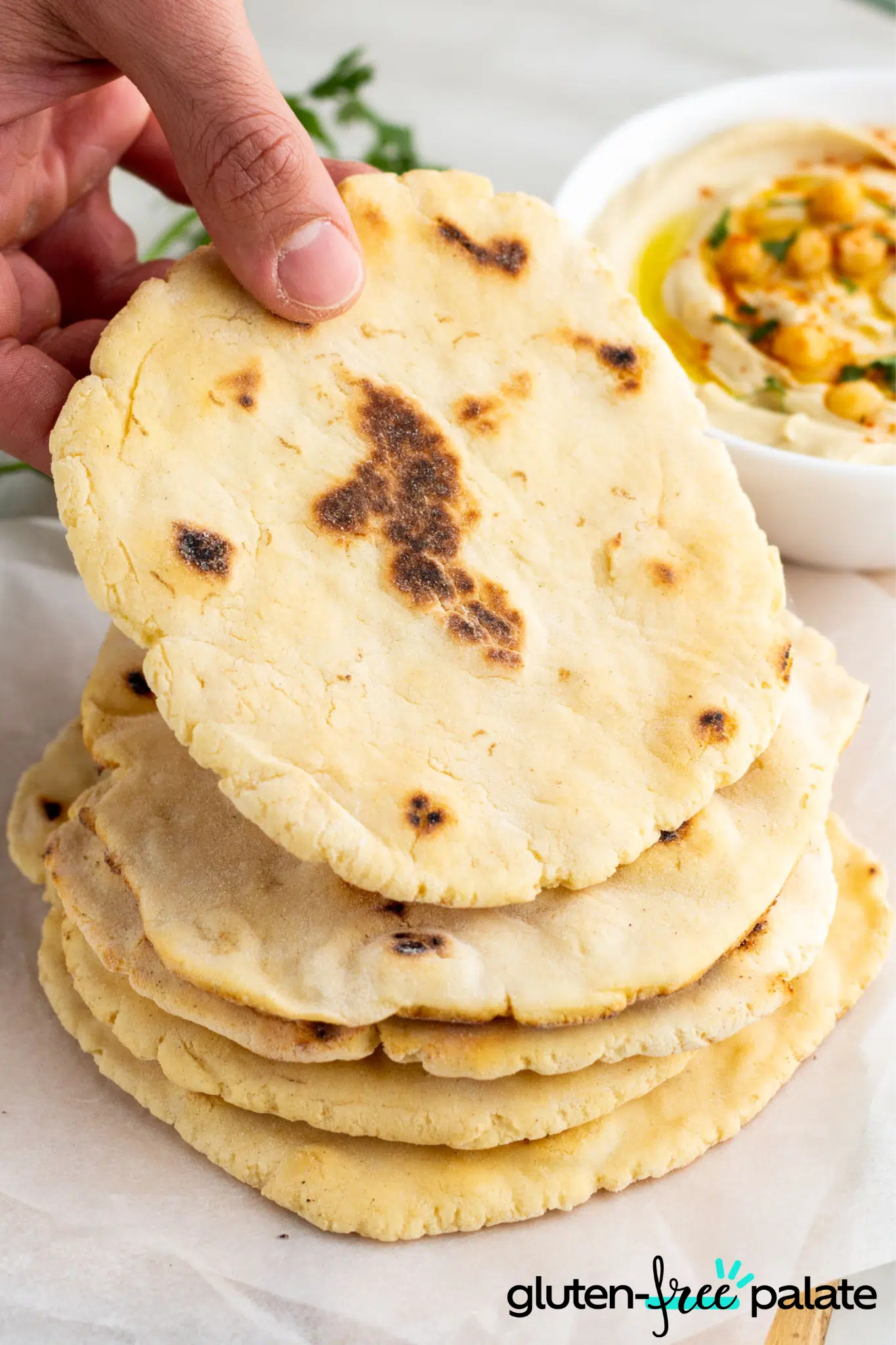
So, what is pita bread? Traditional pita bread is a flatbread that originated in the Middle East. It has a unique pocket-like structure, which makes it perfect for filling with various ingredients or enjoying alongside mezes, dips, and spreads. We recommend making gluten-free gyros with these pitas!
If you love making tortillas from scratch, you'll want to try these gluten-free corn tortillas next or these gluten-free, dairy-free, and vegan tortillas. Gluten-free naan made with all-purpose flour, yogurt, and a few other simple ingredients is exactly the gluten-free side dish you've been waiting for! You can also try your hand at making gluten-free phyllo dough if you want to make delicious baklava, spanakopita, and other lovely treats. For your curries, you must make these Gluten-Free Roti.
Unlock the secrets to creating mouthwatering gluten-free artisan breads with this Udemy course, and elevate your baking skills to a whole new level!
GLUTEN-FREE PITA BREAD RECIPE
If you wonder why you should make your own gluten-free pita bread. The answer is simple: it is easy to make and has no added nasties. Plus, it is easier on the pocket.
The versatility of these GF pita bread is amazing! Use the bread for dipping into your favorite dips, making sandwiches, adding it to your Fattoush salad, using it as a burger bun, or even making a flatbread pizza. The options are endless hence the reason to double the batch and freeze these. The versatility and choices are amazing, especially when you are craving gluten-free bread.
WHY YOU’RE GOING TO LOVE THIS HOMEMADE GLUTEN-FREE PITA BREAD
Easy to make - In just under 30 minutes, you will be enjoying your sandwich or dipping this homemade GF pita bread in your favorite dip, or sharing it with friends as an appetizer.
Minimal ingredients - With just 6 ingredients, most of which are pantry staples, there is no stopping by the store when you want to make these on a whim.
No nasties - Making your GF pita bread is far healthier, and you know what you're adding to it.
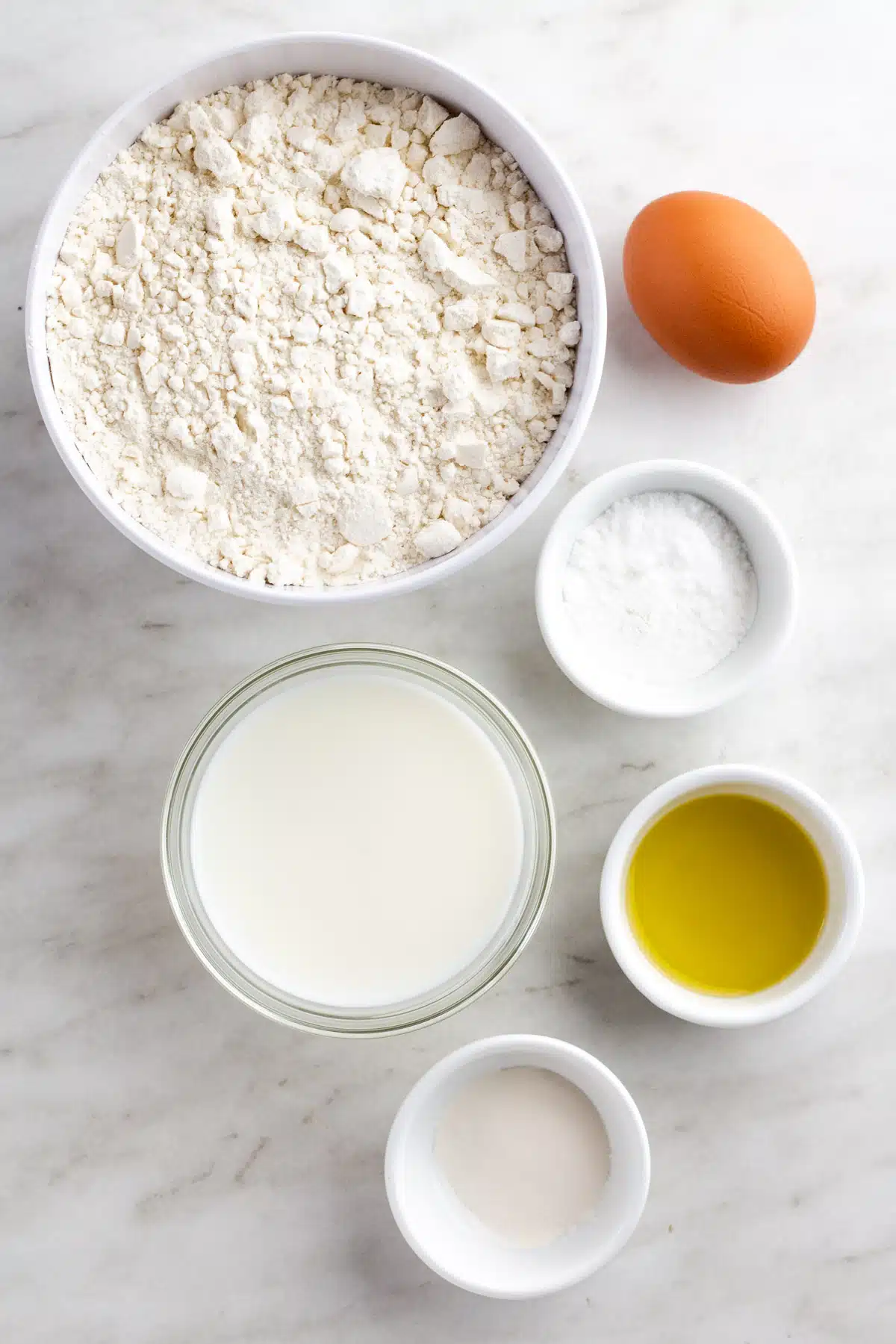
INGREDIENTS IN GLUTEN-FREE PITA BREAD
Flour - 2 cups all-purpose gluten-free flour. I've used Bob's Red Mill Resealable Gluten-Free All-Purpose Baking Flour.
Xanthan gum - Omit if your flour already contains gum. I do not use tapioca starch in this recipe.
Baking powder - Baking powder will help the pita bread rise as we are not using yeast, so this is yeast-free bread.
Salt - For taste.
Oil - I've used olive oil. You can also use grapeseed, canola, or vegetable oil. I prefer a more neutral oil.
Egg - large egg at room temperature. This will help the pita rise and add some structure to the mix.
Milk - ¾ cup milk of your choice. I prefer milk with some fat as it adds richness to the pita dough.
EQUIPMENT NEEDED FOR THIS GLUTEN-FREE PITA BREAD
Mixing bowls - These Pyrex mixing bowls come in handy for preparing the dough.
Rolling pin - I use the traditional wooden rolling pin to roll out the dough.
Cast iron skillet - You can use a well-seasoned cast iron skillet to cook the pita bread. Make sure it's preheated and lightly greased to prevent sticking.
Whisk - You will also need a whisk to mix the dry ingredients together in the mixing bowl. The whisk will help ensure the flour, xanthan gum (if using), baking powder, and salt are thoroughly combined before adding the wet ingredients.
If you have any questions about making gluten-free pita bread, please leave a comment, and we will get back to you as soon as possible.
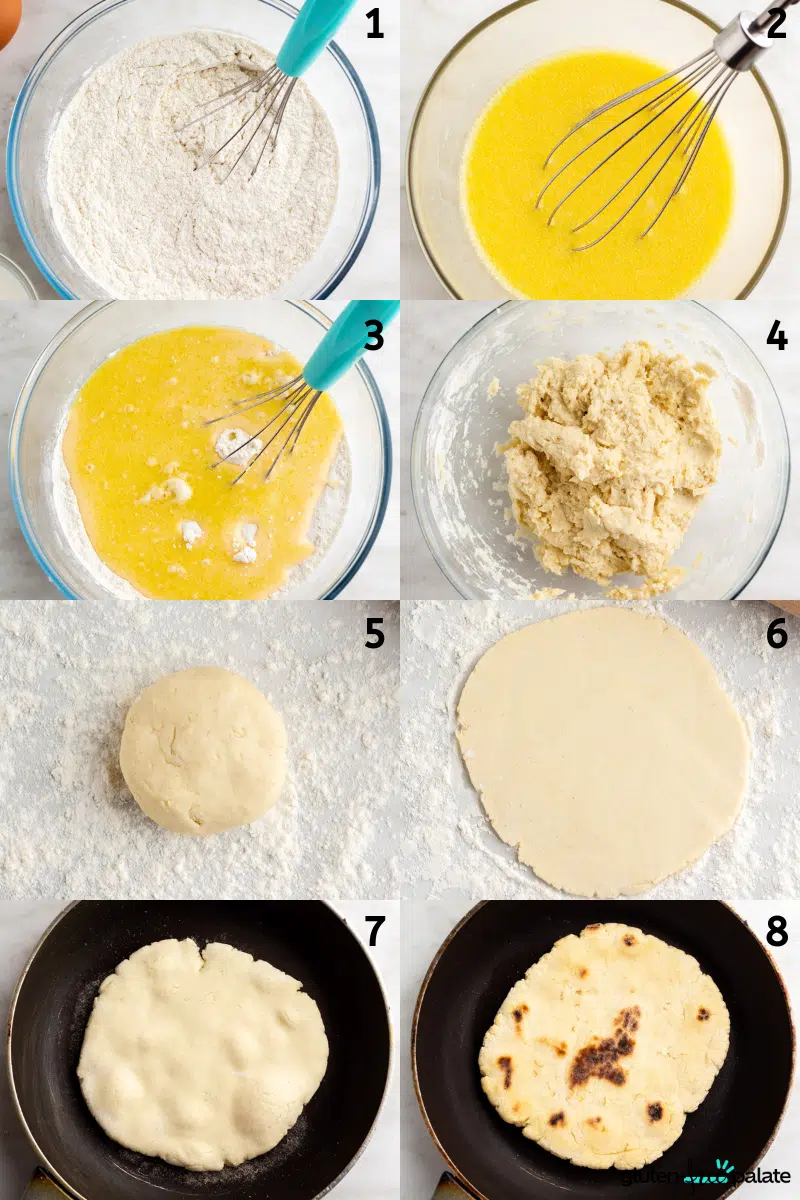
HOW TO MAKE GLUTEN-FREE PITA BREAD
- In a large mixing bowl, whisk together the flour, xanthan gum (if using), baking powder, and salt.
- In another bowl, combine the olive oil, egg, and milk.
- Add the wet ingredients to the dry ingredients and mix to combine. Do not overmix. The pita dough should be sticky at this point.
- Divide the dough into 6 equal pieces and shape them into balls. Roll them out into circles ~ ¼ inch thick using a floured rolling pin.
- Heat a skillet over medium-high heat for a few minutes. Place a pita in the skillet and cook for about a minute. When small air bubbles start forming at the surface, flip and cook for one more minute on the other side.
- Serve warm with a dip of choice like hummus or cut in the middle and stuff the pita bread with your favorite fillings.
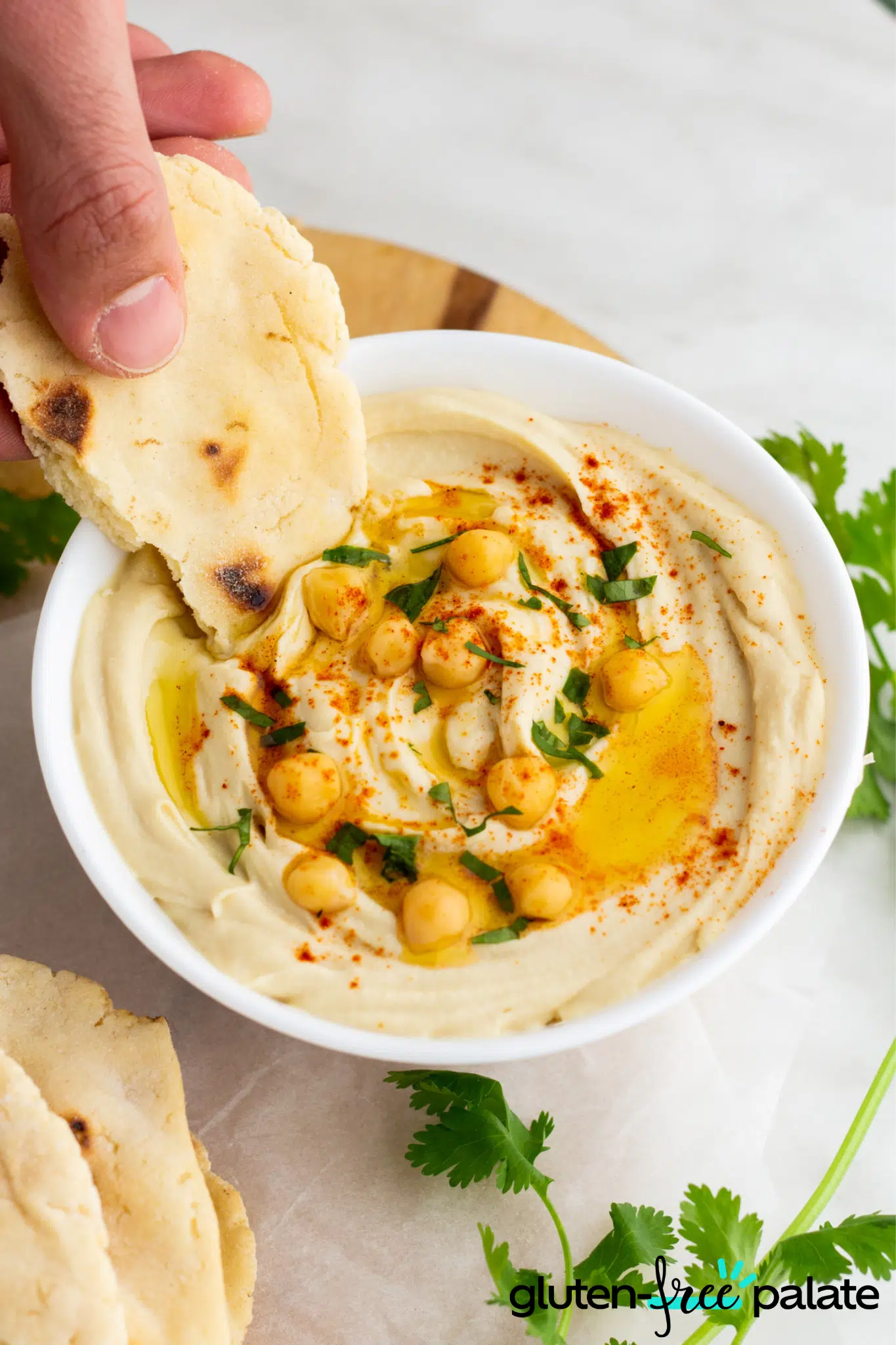
TIPS FOR MAKING THE BEST GF PITA BREAD
Do not overmix the dough -Be careful not to overmix it as it can lead to less light and fluffy pita bread. Mix the ingredients until just combined to maintain a tender texture.
Use the recommended flour - It's recommended to use the specific flour mentioned in the recipe for optimal results. While you can experiment with other blends, remember that the outcome may differ as I haven't personally tested them.
Measure flour correctly - Ensure accurate measurements by using the spoon and cup method when measuring the flour. This will help maintain the proper balance of ingredients and ensure consistent results.
Roll them thin and evenly - When rolling out the dough, make sure to roll it to an even thickness and thin enough. This will promote even cooking and help the pita bread puff up properly, creating that desired pocket.
Frequently Asked Questions
IS PITA BREAD GLUTEN-FREE?
Traditionally, no. It is made with gluten flour. I have created this recipe as gluten-free, so check the ingredients you use are all gluten-free.
IS GF PITA BREAD HEALTHIER THAN REGULAR BREAD?
GF pita bread is generally not healthier than regular bread. Regular bread has less starch and has added vitamins and minerals derived from gluten flour. So, it is important to use decent quality gluten-free flour with less starch and added vitamins and minerals.
IS GLUTEN-FREE PITA THE SAME AS NAAN BREAD?
Naan bread is generally made with egg and yogurt. Naan has a different texture than pita bread, so although they are both considered flatbreads, they are not the same.
IS PITA BREAD THE SAME AS GLUTEN-FREE GYRO BREAD?
Not exactly, as gyro bread has no pocket and is more like naan bread.
HOW DO I STORE GLUTEN-FREE PITA BREAD?
Store it in an airtight container in a cool place in your kitchen for up to 2 days.
CAN I FREEZE GLUTEN-FREE PITA BREAD?
Cool them, then place them in an airtight container and freeze them for up to 1 month.
WHAT CAN I DO IF THE GLUTEN-FREE PITAS ARE NOT PUFFING UP?
If your gluten-free pitas are not puffing up as desired, there are a few things you can try to troubleshoot the issue:
Check your flour - Ensure you use the recommended gluten-free flour blend for the recipe. Different gluten-free flours have varying properties and textures, which can affect the final result. Using a blend specifically designed for baking can help achieve better results.
Measure flour correctly - It's crucial to measure the gluten-free flour accurately. Too much or too little flour can affect the texture and the ability of the pitas to puff up and create the pita pocket. Use measuring cups or a kitchen scale to ensure you add the right amount of flour, as mentioned in the recipe.
Roll them correctly - Rolling the pitas to the right thickness is essential. If they are too thick, they may not puff up properly and create a pita pocket. Roll the dough out evenly and aim for a thickness of about ¼ inch or slightly thinner. Be mindful of maintaining a consistent thickness throughout to promote even cooking and puffing.
Adjust heat and cooking time - If your pitas are not puffing up, you can try adjusting the heat on your cast iron skillet. Make sure it's preheated properly to the recommended temperature. Additionally, you can increase the cooking time slightly to allow more time for the pitas to puff up.
CAN YOU MAKE THIS GLUTEN-FREE PITA BREAD AHEAD OF TIME?
Yes, you can. I like to make the dough the night before cooking. Make the dough according to the recipe card and store it in the refrigerator overnight. It can even be refrigerated for up to 2 days.
Just remember to tightly cover the dough with plastic wrap or place it in an airtight container to prevent drying out. When you're ready to cook the pita bread, allow the dough to come to room temperature before proceeding with the rolling and cooking steps. This will ensure the best results for your homemade gluten-free pita bread.
HOW DO YOU SERVE GLUTEN-FREE PITA BREAD?
- Use the GF pita bread for dipping into your favorite dips.
- Make sandwiches or use them as a burger roll.
- Add it to your Fattoush salad
- Use it as a base for flatbread pizza
WHAT CAN I SUBSTITUTE IN THIS GLUTEN-FREE PITA BREAD RECIPE?
Dairy-free - You can substitute the milk for unsweetened nut milk, though I have not tried it.
Egg-free - You may be able to use an egg replacer; I have not tried it.
Vegan - You would need to use a milk and egg alternative, as suggested above.
Can I Use A Cast Iron Skillet To Make This Gluten-Free Pita Recipe?
Yes, you can definitely use a cast iron skillet to make gluten-free pita bread. Cast iron skillets are excellent for cooking breads and other baked goods because they distribute heat evenly and retain heat well. Preheat your cast iron skillet over medium-high heat. Make sure it's well seasoned or lightly greased to prevent sticking. Carefully transfer the rolled-out dough to the hot skillet and cook for about 1-2 minutes on each side or until it puffs up and develops golden brown spots.
What Brands Offer Gluten-Free Pita Bread?
Here are a few popular brands of gluten-free pita bread that you can find; there are countless more:
- BFree Gluten-Free Pita Bread - This brand offers gluten-free pita bread that is soft and flavorful. It is made with a blend of gluten-free flours and is free from major allergens such as wheat, dairy, eggs, and nuts.
- Schar Gluten-Free Pita Bread - Schar is a well-known brand for gluten-free products, and their gluten-free pita bread is no exception. These pitas are light, airy, and have a great texture. They are also free from wheat, lactose, and preservatives.
- Toufayan Bakeries Gluten-Free Pita Bread - Toufayan Bakeries offers gluten-free pita bread that is both soft and sturdy, making it perfect for stuffing with your favorite fillings. These pitas are free from gluten, soy, dairy, and nut.
Why Make Your Own Gluten-Free Homemade Pita Bread?
Making gluten-free pita bread from scratch offers several benefits. It's a straightforward process that avoids unwanted additives commonly found in store-bought alternatives. Moreover, crafting your own pita bread is more cost-effective compared to purchasing pre-made options.
By taking charge of your own kitchen, you have full control over the ingredients, enjoy a simplified process, and relish the rewarding experience of creating personalized and freshly baked gluten-free pita bread at home.
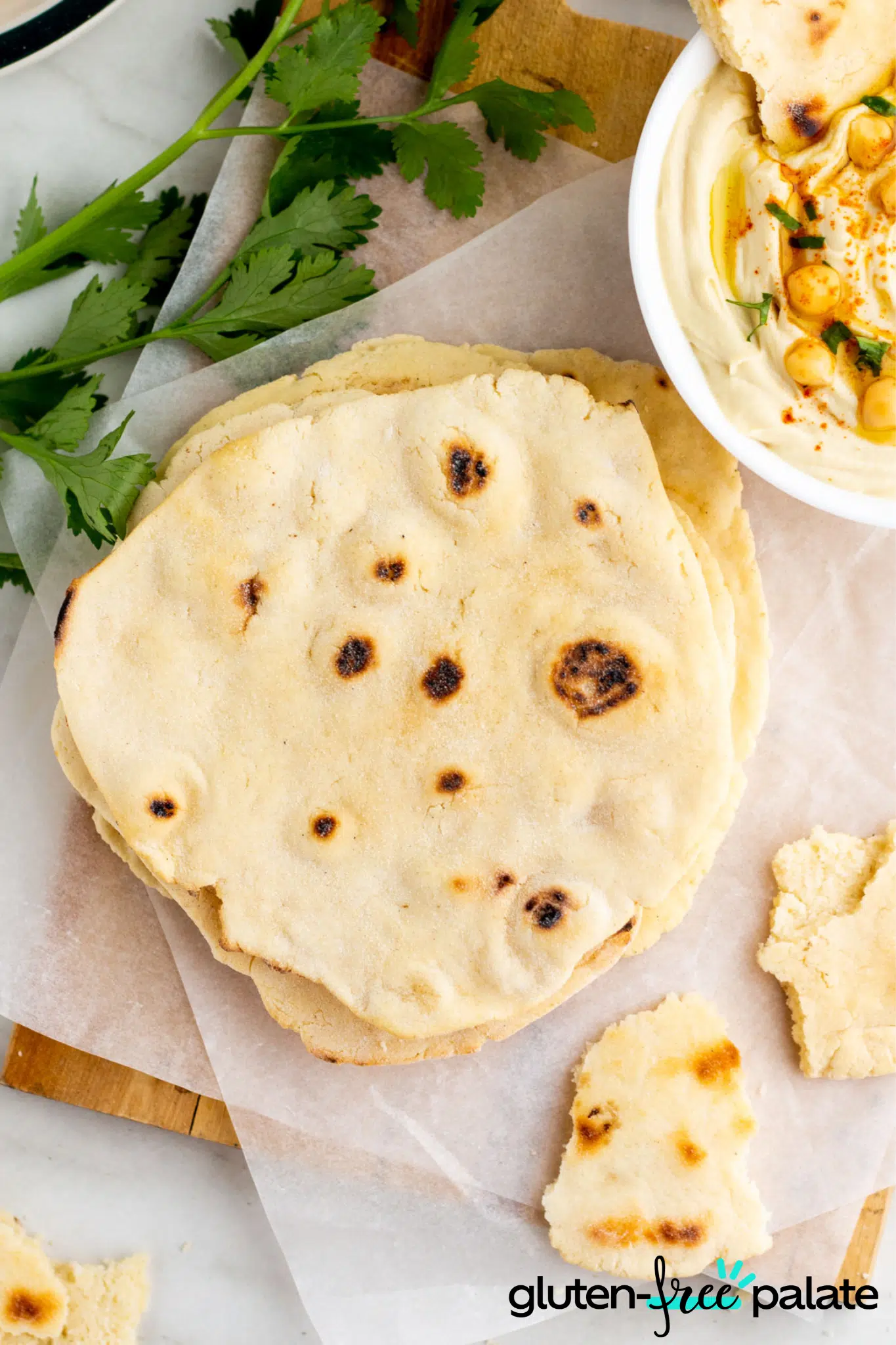
Gluten-Free Pita Bread
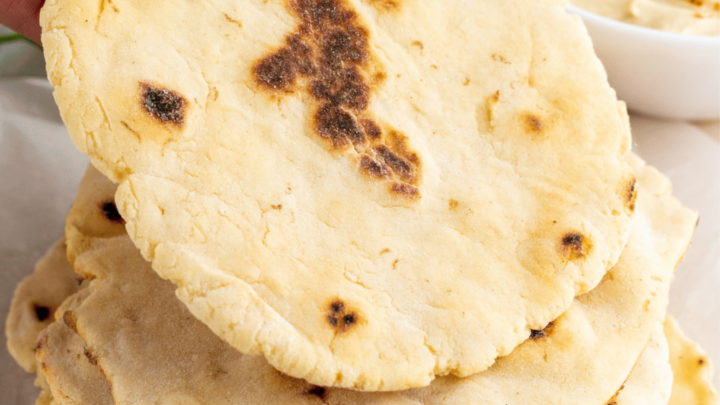
In just under 30 minutes, you will be enjoying these fluffy and tender gluten-free pita bread filled with your fillings of choice or your favorite dip.
Ingredients
- 2 cups all-purpose gluten-free flour
- 1 tsp xanthan gum (omit if your flour already contains gum)
- 2 tsp baking powder
- 2 tsp salt
- 2 tbsp olive oil
- 1 large egg
- ¾ cup milk
Instructions
- In a large mixing bowl, whisk together the flour, xanthan gum (if using), baking powder, and salt.
- In another bowl combine the olive oil, egg, and milk.
- Add the wet ingredients to the dry ingredients and mix to combine. Do not overmix. The dough should be sticky at this point.
- Divide the dough into 6 equal pieces and shape them into balls. Roll them out into circles - ¼ inch thick using a floured rolling pin.
- Heat a skillet over medium-high heat for a few minutes. Place a pita in the skillet and cook for about a minute. When small air bubbles start forming at the surface, flip and cook for one more minute on the other side.
- Serve warm with a dip of choice like hummus or cut in the middle and stuff the pita bread with your favorite fillings.
Notes
- Do not overmix the dough. Overmixing will result in less light and fluffy pita bread.
Recommended Products
As an Amazon Associate and member of other affiliate programs, I earn from qualifying purchases. They never cost you extra.
Nutrition Information:
Yield:
6Serving Size:
1Amount Per Serving: Calories: 68Total Fat: 6gSaturated Fat: 1gTrans Fat: 0gUnsaturated Fat: 4gCholesterol: 33mgSodium: 964mgCarbohydrates: 2gFiber: 0gSugar: 2gProtein: 2g
This nutrition info is based on the exact ingredients and brands that I used a the time. It may not be 100% accurate. Please check your ingredients nutrition labels.
Before You Go...
Once you've made some delicious gluten-free pita bread, you can turn them into perfectly crispy gluten-free pita chips!





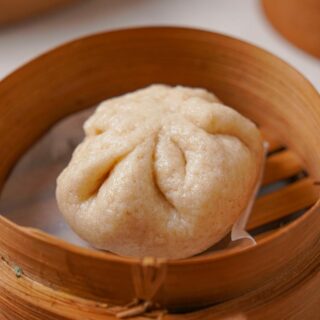
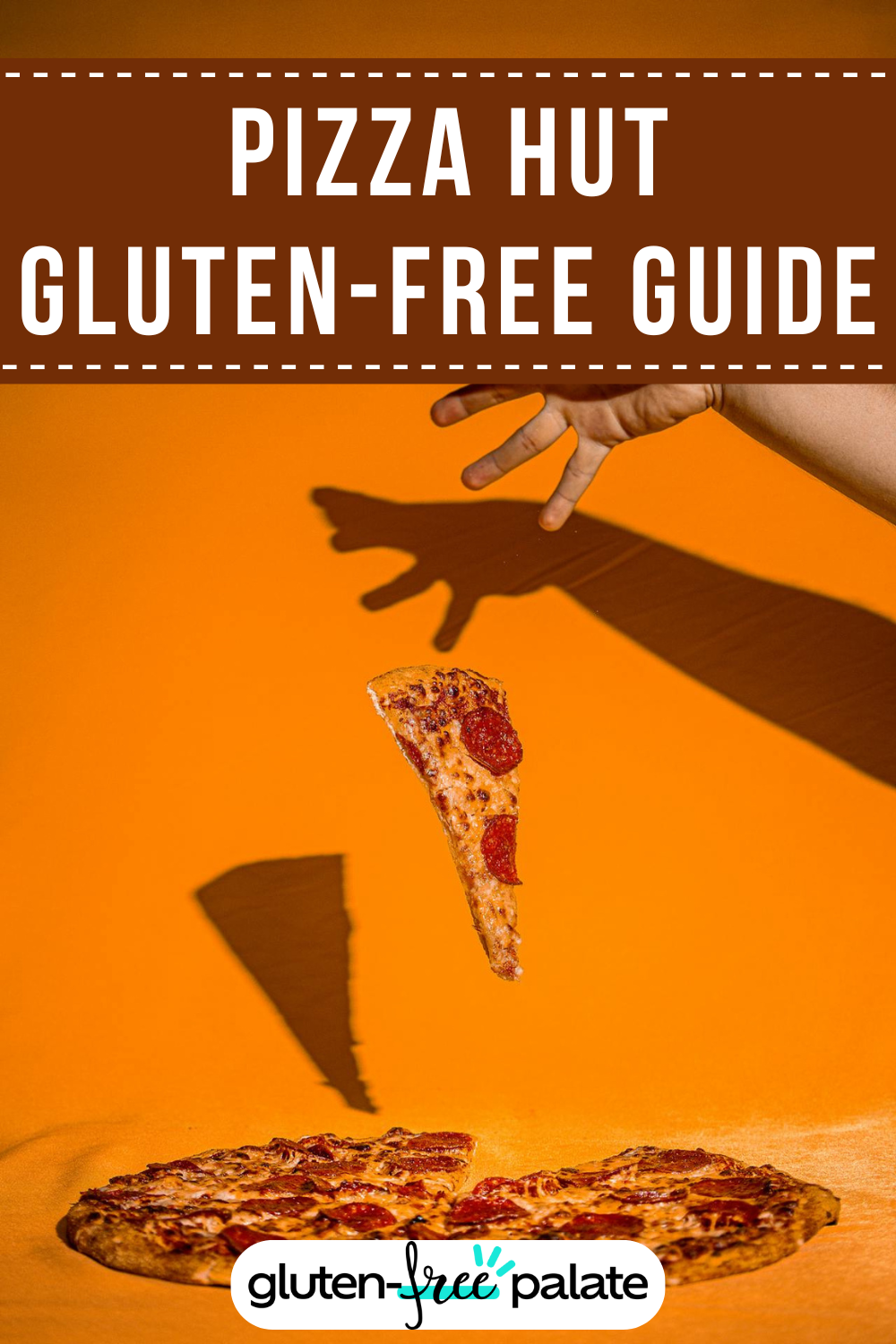
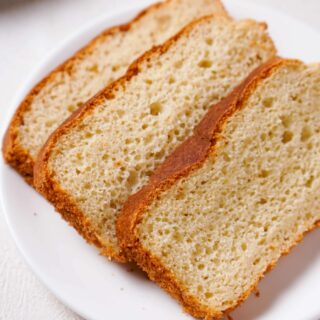
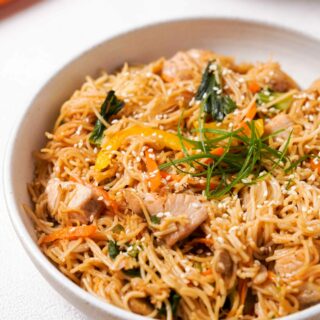
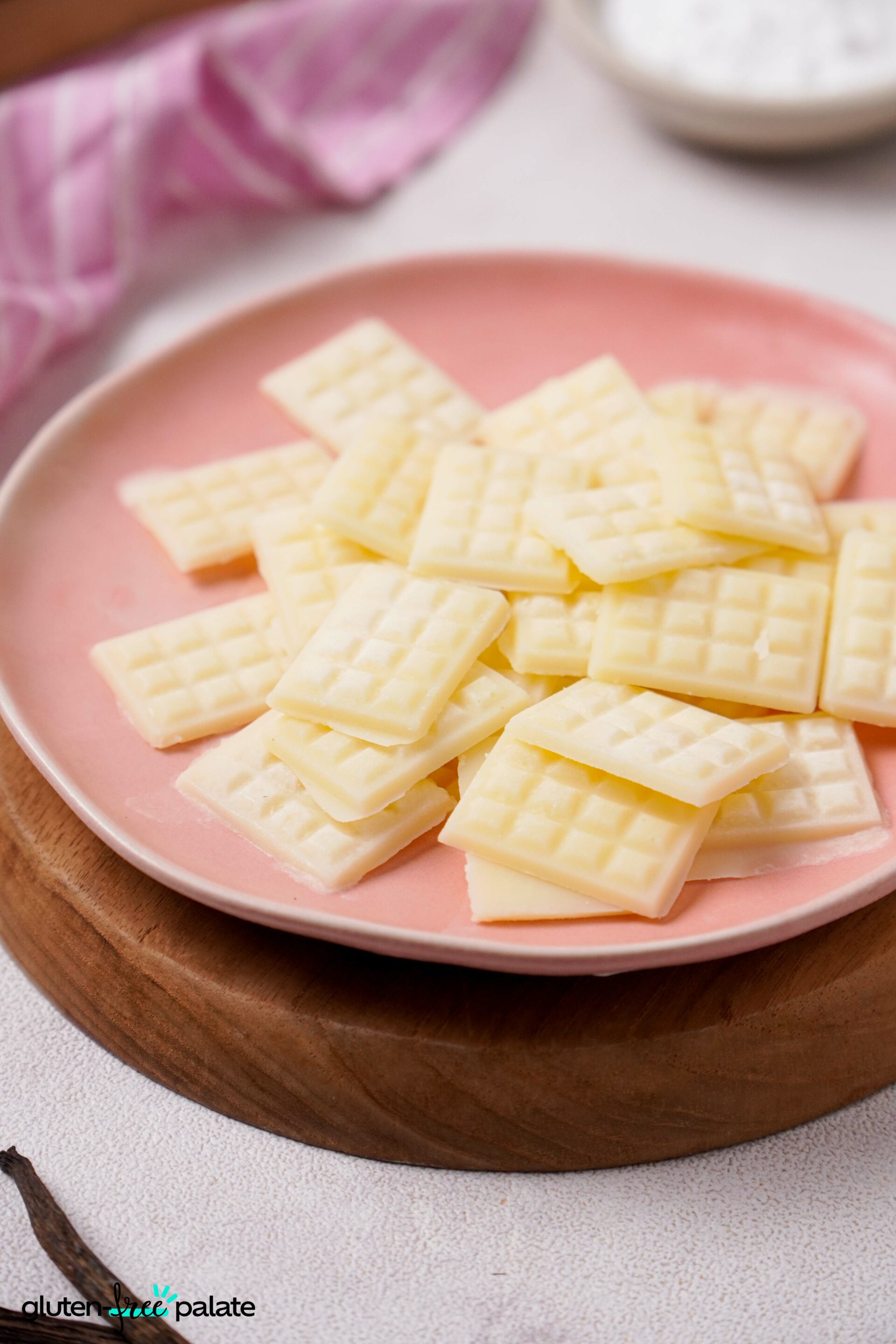
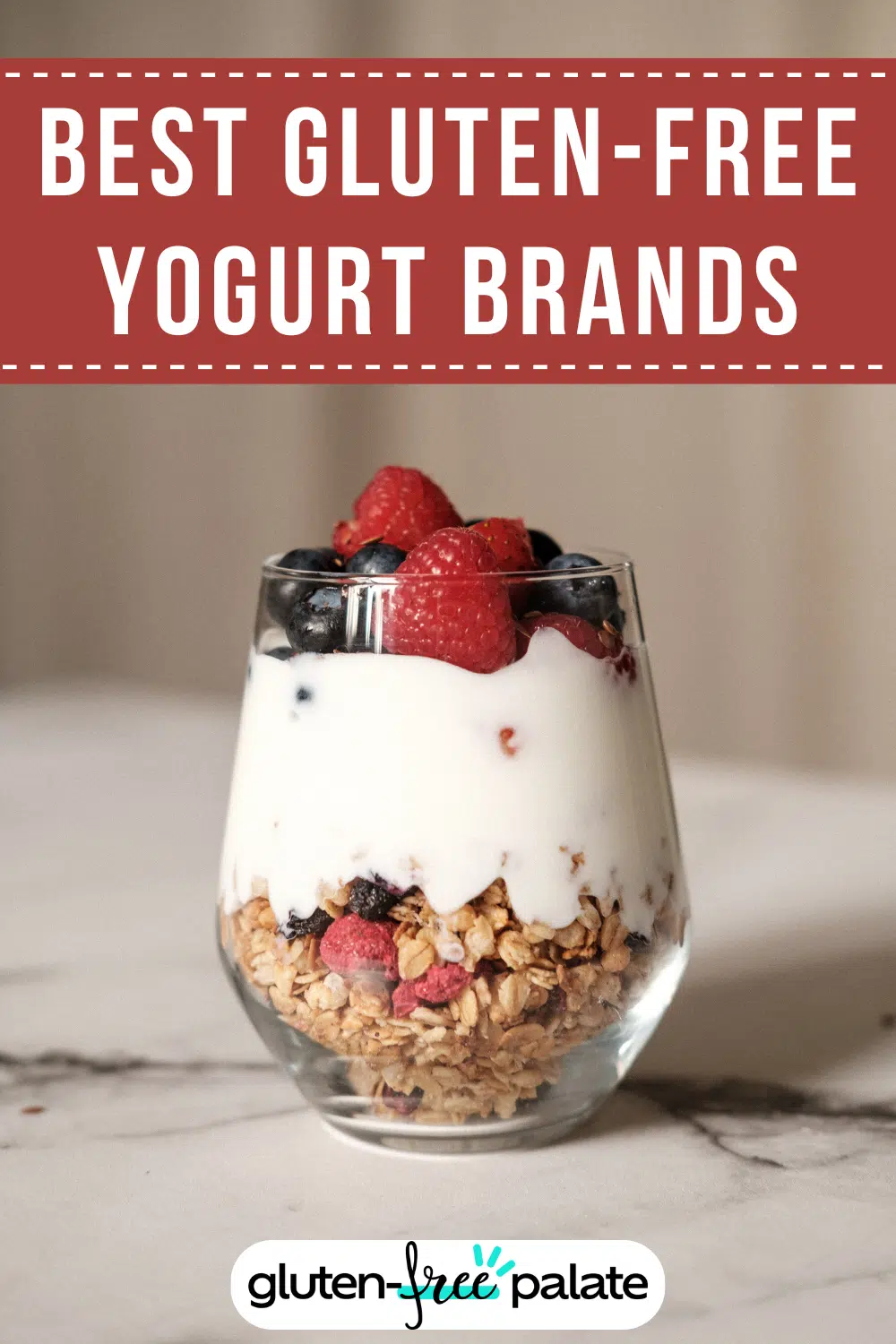
Leah Tartaglia
I made these, I used soy milk because I'm also lactose intolerant, I also used a cast iron pan, they came out really good, taste and texture, they didn't have a pocket tho, but that was ok with me because they were really good
Wendy Stoltz
It's great to hear that your gluten-free pita bread turned out well. The fact that they didn't have a pocket may have been due to the lack of a leavening agent or not using enough of it due to the soy milk, but it's good to know that it didn't affect the taste or overall enjoyment. Keep experimenting and finding ways to make delicious meals that work for your dietary needs!
Jessica
These turned out yummy! I'm going to add some cumin for a bit more flavor. Like the other commenter, I did not get a pocket, but perhaps I need to roll them a little thinner. Can you make this dough the night before cooking?
Wendy Stoltz
Hi Jessica,
I'm glad to hear that the pita bread turned out yummy! Adding cumin sounds like a great idea to enhance the flavor. Rolling the dough a little thinner might help create a pocket in the pita bread.
As for making the dough the night before cooking, it's certainly possible. You can prepare the dough in advance and store it in the refrigerator overnight. Just make sure to cover it tightly with plastic wrap or place it in an airtight container to prevent it from drying out. When you're ready to cook the pita bread, allow the dough to come to room temperature before proceeding with the rolling and cooking steps.
Remember, it's important not to overmix the dough as it can affect the texture of the pita bread. Keeping it slightly sticky is ideal for achieving light and fluffy results. Enjoy your gluten-free pita bread with your favorite fillings or dips!
Hannah
I made these tonight and they turned out so delicious! I struggled a bit with getting the dough to come together but adding a couple of tablespoons of flour ended up being what it needed. I think I accidentally overmixed the dough because of this so I didn't get a pocket but it was still so good and definitely something I will make again!
Wendy Stoltz
Hi Hannah,
I'm so glad to hear the pita bread turned out delicious for you! It's common for gluten-free doughs to behave a bit differently, so it's great you found that adding a bit more flour helped. Overmixing can indeed prevent the formation of pockets, but as you’ve experienced, they can still be quite tasty even without them. Next time, you might try mixing the dough just until it comes together to help get that pocket. Keep experimenting and enjoy your baking!